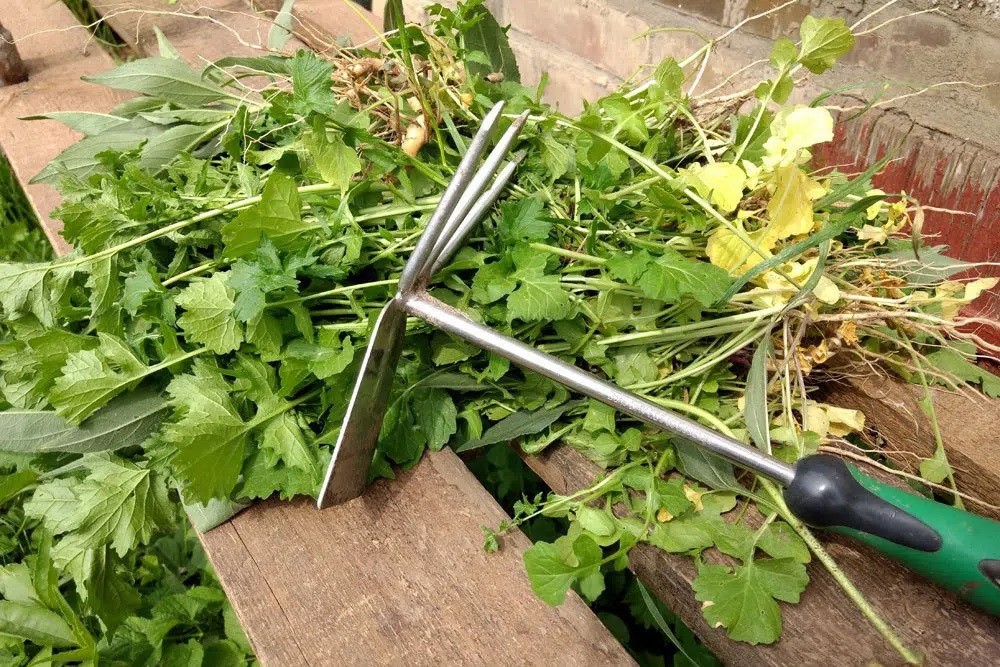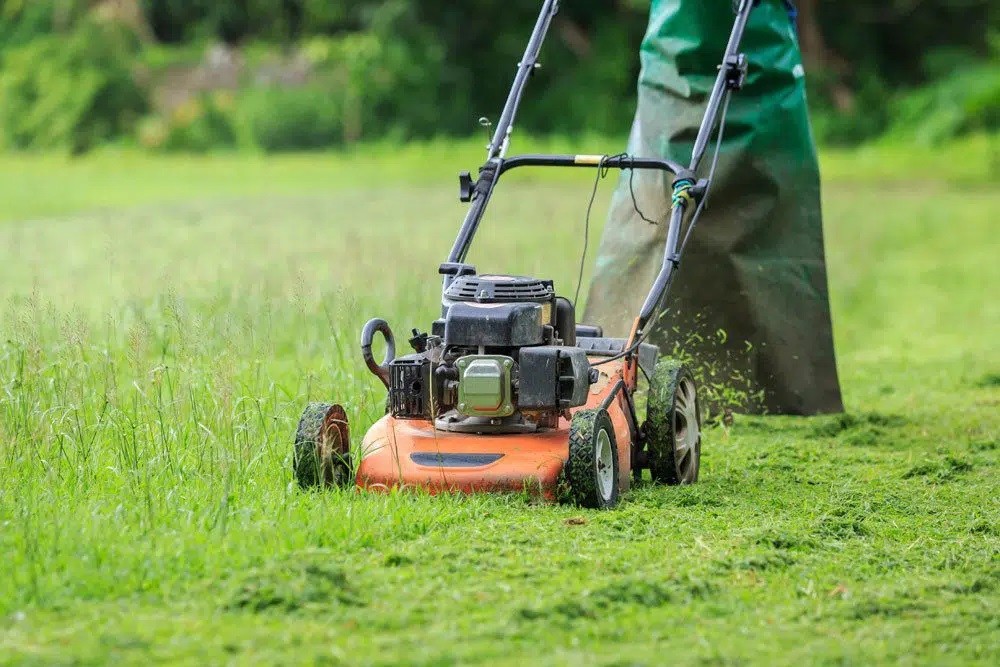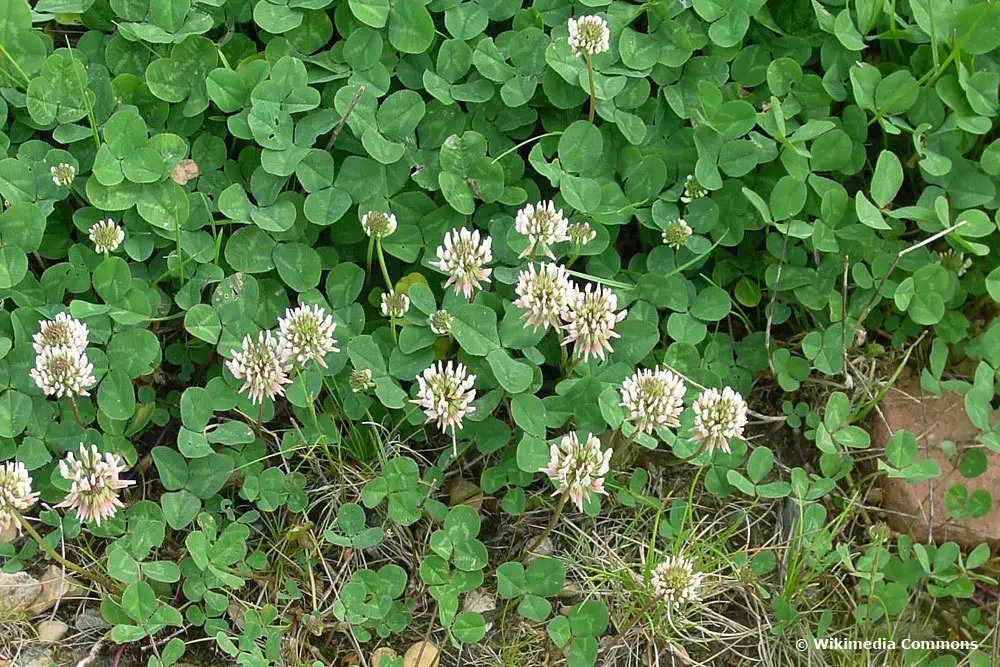The lawn is freshly sown and already weeds are spreading? Find out why and how you should fight the unwanted growth by reading our guide.
- Weeds grow faster than grass, so they can be found more quickly on newly established lawns
- Weed as soon as possible, in case of root weeds also pull the roots
- Water and fertilize lawn regularly to stimulate grass growth
- Mow as short as possible at least once a week
- Repair damaged areas and promote the densest possible grass growth
Contents
Cause and measures
Especially on newly established lawns, weeds often sprout faster than the desired grass. Grasses need suitable temperatures and, above all, plenty of moisture to grow right from the start – weeds, on the other hand, thrive in bad weather, cold temperatures and drought. Therefore, you should water regularly during drought to encourage grass seeds to germinate. Of course, this will not stop dandelions, daisies, clover and co, but the lawn will have a better chance to grow in height.
Tip: Even before laying the lawn, you should thoroughly weed the area and remove weeds. You can also cover heavily infested areas with a weed fleece and spread topsoil on top. The fleece reliably keeps stubborn root weeds away.
Weeding
The first measure against weed growth is hand weeding. Pluck out weeds regularly, taking care to pull out the roots along with them. Dandelion, horsetail, goutweed, field bindweed, field thistle and couch grass, for example, form extensive, dense root networks and keep growing back from even the smallest root remnants. Therefore, you must not just superficially remove these weeds. Seed weeds, such as chickweed or franciscus, must definitely be weeded before they reach seed maturity, as they self-seed and keep coming back.
When weeding the weeds, proceed as follows:
- Pluck out seed weeds
- remove root weeds with a weeder or root pruner
- for larger areas use a weeder with a long handle
- pendulum hoe is also very suitable
Tip: It is usually not recommended to walk on a lawn when it is freshly sown and has not yet grown higher than five centimeters. However, treading is essential and also important for weed removal, otherwise soon no grass will grow at all.

Mowing the lawn
Especially on larger lawns, weeding the weeds can be very time-consuming and therefore hardly practical. Here, the best way to combat the unwanted growth is as follows:
- Fertilize and water the area
- allow grasses to grow like weeds
- mow as short as possible from a height of ten centimeters onwards
- then mow at least once a week
- water and fertilize regularly
The more frequently you mow, the fewer weeds will grow over time – you’re practically starving them out. While the weeds are weakened by mowing, the grasses grow back all the more vigorously and now also have the chance to overtake the usually faster-growing competitors. Any bare spots or unevenly overgrown areas should be reseeded after removing the weeds growing there. The area should be as densely covered with grass as possible so that the weeds do not come through again.
Tip: This measure requires patience, but is very successful – except for clover, daisies and dandelions. You will still have to pluck these by hand.

New plant
If neither weeding nor mowing helps and there is hardly any grass to be seen except for weeds, the only thing that helps is replanting. Proceed as follows:
- Dig up the lawn thoroughly
- remove all weeds above and below the ground
- lay out weed fleece
- spread fresh soil on it (at least 20 centimeters thick)
- sow lawn seed
- press the seed
Water the area vigorously
From the very beginning, make sure to water and fertilize regularly. Even if the lawn is freshly seeded, the young grasses need a lot of nutrients for strong and fast growth. How much fertilizer and water you need to apply depends on factors such as
- the specific lawn mixture
- the soil composition
- and the weather
- depends. If it is dry after sowing, you can calmly water several times a day.
Tip: Before sowing, a professional soil test by a specialized laboratory is recommended. This will give you recommendations for targeted fertilization.
Weedkiller
Why go to all that trouble when you can simply apply a weed killer and get rid of the weeds in your freshly seeded lawn? In fact, there are some herbicides that can be applied directly after sowing. For this purpose, there are special lawn fertilizers mixed with weed killers on the market. However, even these do not help without further aids, because even after their use, you need to mow more often and reseed if necessary.
Furthermore, the chemical club has some serious disadvantages:
- not only weeds, but also young grass is combated
- contained toxins damage direct environment, also ornamental plants and insects
- less useful insects in the garden mean more pests
- toxins seep into the soil and contaminate it
- this disturbs soil life and humus formation
- also seep into the groundwater
Therefore, if possible, you should avoid using chemical weed killers and instead take the measures described.
Frequently asked questions
What can be the reason that weeds grow so strongly?
Another reason for the strong weed growth and the lack of lawn green is the use of too old or unsuitable seed. Select the lawn seed suitable for the location, so on a rather shady location should also be sure to spread a shade lawn.
Is the soil contaminated and needs to be replaced?
If the lawn is freshly sown and the weeds grow vigorously first, this is not a sign of “contaminated” soil. At most, it may be that you did not thoroughly weed the area before planting the lawn or that the soil is compacted and therefore not very suitable for grass growth. Loamy or clayey soils improve before sowing with plenty of sand and compost, then the grass will also grow better.
Where do all the weeds come from?
Weeds, like grasses, are a natural part of nature and therefore cannot be completely avoided. The seeds fly onto the lawn with the wind or are carried in by animals. Extra planting soil or topsoil can also contain weed seeds and root debris that sprout under the right growing conditions.


